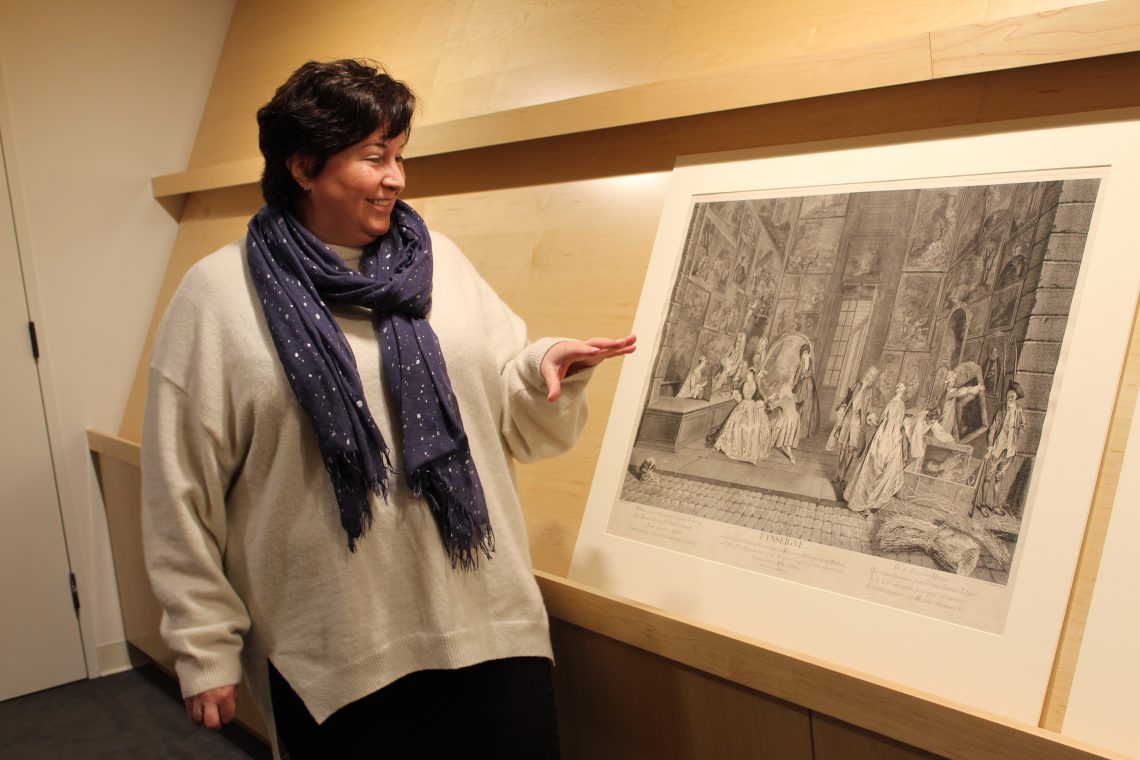 Elizabeth Mitchell, Burton and Deedee McMurtry Curator and director of the Curatorial Fellowship Program at the Cantor Arts Center, stands before a work of art in one of the Cantor's study rooms. Photo by Sandra Feder
Elizabeth Mitchell, Burton and Deedee McMurtry Curator and director of the Curatorial Fellowship Program at the Cantor Arts Center, stands before a work of art in one of the Cantor's study rooms. Photo by Sandra Feder
Q&A with curator Elizabeth Mitchell on gifts to the Cantor
Elizabeth Mitchell, Burton and Deedee McMurtry Curator and director of the Curatorial Fellowship Program at the Cantor Arts Center, discusses the Capital Group Foundation’s gift of 1,000 photographs and the 12 prints, drawings, and photographs given by Stanford alumna Marilyn F. Symmes (BA, ’71).
Q: Can you talk about the importance of gifts like these?
Only a small portion of our collection makes it into our galleries. Much of it gets used in our study rooms for teaching purposes, which is an integral part of our mission as a 21st-century university museum. It’s important that we continue to build on our collection to meet student and faculty interest. We’re using these works to facilitate very direct one-on-one interactions between students and scholars, and the objects, so we’re always looking for new things that both complicate and extend the conversation.
Q: Can you give an example of a work you would use in this way?
A print that will be of great use to us is the 2001 Su-Li Hung woodcut of the World Trade Center. At first glance, the design of it is very simple and stark, and it takes a moment to realize you’re looking at the World Trade Center. Then once you do, the meaning of the image and the feeling that you’re experiencing changes. You go from puzzling out an abstract design to realizing you’re looking at a memorial to a truly horrific event. The dialogue a work like this can inspire is very meaningful.
Q: How do students react to these opportunities?
What warms my heart as a curator is to see students engaged with a work of art, particularly a work on paper, with no glass between them. It’s exciting to see students instinctively engage with the image but then to engage with it as an object as well—to notice its surface texture, observe the variations in the ink color. Once they see it as an object, they recognize it is the sum of infinite decisions made by the artist. And that’s when they start having a whole different experience. They’re seeing it as an object with its own history, rather than just an image you glance at and move on from.
Q: In terms of exhibitions, how do you think about new gifts?
With every gift I pursue for the museum, I think about how new objects relate to works already in the permanent collection. These two gifts beautifully represent the range of the opportunities that come to us. One [from the Capital Group Foundation] was born out of a long-standing relationship with a foundation that was interested in compiling a substantive collection representing great American photographers, to be shared and shown in an academic environment. The other [from Stanford alumna Marilyn Symmes] is a very personal collection. Its objects were acquired by someone who has the curious and voracious eye of a trained curator and art historian. I’m looking forward to sharing objects from both gifts in our study rooms and through exhibitions.
